
NGC-30 / UIT2
Installation manual

2 | nVent.com
Contents
Section I – Overview ................................................................................................................................. 3
1.1 Introduction .............................................................................................................................. 3
Section 2 – Installation and Wiring ........................................................................................................... 4
2.1 Introduction .............................................................................................................................. 4
2.2 Initial Inspection ...................................................................................................................... 4
2.3 Operating Environment ........................................................................................................... 4
2.4 Installation Location ................................................................................................................ 5
2.5 Mounting Procedures .............................................................................................................. 5
2.6 Wiring Procedures ................................................................................................................... 5
2.6.1 Incoming Power With Distribution System ................................................................... 5
2.6.2 Outgoing Power With Distribution System ................................................................... 6
2.6.3 Incoming/Outgoing Power Without Distribution Panel Board .................................... 6
2.6.4 Incoming Rtd Wiring ....................................................................................................... 7
2.6.5 Connecting The RS-485 Device Network...................................................................... 7
2.7 Connections for Remote Annunciation — NGC-UIT2-EX .....................................................12
2.8 RS-232, RS-485, or Ethernet Remote Port Connections to a Host Computer .................... 13
2.8.1 RS-232 Serial Connections .......................................................................................... 13
2.8.2 RS-485 Serial Connections .......................................................................................... 13
2.8.3 Ethernet Connections ................................................................................................... 14
2.9 Testing the NGC-30 System ..................................................................................................14
Section 3 – nVent RAYCHEM NGC-30 Components and Operation ........................................................ 15
3.1 User Interface Terminal (NGC-UIT2)..................................................................................... 15
3.1.1 Multiple Ngc-Uit2 Models ............................................................................................ 15
3.1.2 Ngc-Uit2 Local And Remote Network Connections ................................................... 16
3.1.3 RS-485 Conguration Switches .................................................................................. 17
3.1.4 Ngc-Uit2-Ex Reset Switch ............................................................................................ 17
3.2 Card Rack Module (NGC-30-CRM/-CRMS) and
Current Transformer Module (NGC-30-CTM) ........................................................................ 18
3.3 Card Rack (NGC-30-CR) ........................................................................................................ 19
3.4 Voltage Monitoring Module (NGC-30-CVM) – Optional ..................................................... 19
3.5 Remote Monitoring Module (RMM2) – Optional ................................................................. 20
3.6 Power Line Carrier Interface Module (PLI) – Optional ........................................................ 21
3.7 The Remote Monitoring Module for Digital Inputs (RMM-DI) ............................................. 22
Section 4 – Appendices .......................................................................................................................... 23
Appendix A – Replacement Component Ordering Guide ..........................................................23
Appendix B – Panel Specications.............................................................................................24
Appendix C – NGC-30-CRM/-CRMS Specications ................................................................... 27
Appendix D – NGC-UIT2 Specications .....................................................................................28
Appendix E – Device Address .....................................................................................................29
Appendix F – RAYCHEM RMM-DI Technical Specication ....................................................... 30

nVent.com | 3
SECTION I – OVERVIEW
1.1 INTRODUCTION
The nVent RAYCHEM NGC-30 is a fully wired and tested control and monitoring system used
with electric heat tracing. This manual provides information pertaining to the installation,
operation, testing, adjustment, and maintenance of all components of the RAYCHEM NGC-30
System. For information about how to program the RAYCHEM NGC-30, see the RAYCHEM
NGC-30 Programming Guide (H58186)
A typical RAYCHEM NGC-30 is made up of at least a User Interface Terminal (NGC-UIT2),
one Card Rack (NGC-30-CR), one Card Rack Module with connectors
(NGC-30-CRM or NGC-30-CRMS), and one Current Transformer Module (NGC-30-CTM).
Optional Remote Monitoring Module for Temperatures (RMM2), Power Line Carrier Interface
(PLI), RMC modules, Remote Monitoring Module for Digital Inputs (RMM-DI) and Voltage
Monitoring Module (NGC-30-CVM) may be used.
The information in this document coincides with the specific releases of firmware
(listed in Table 1.1) for the User Interface Terminal (NGC-UIT2) and Card Rack Module
(NGC-30-CRM/-CRMS) components. As nVent releases new firmware to significantly modify
or enhance any of these components, new documentation will accompany these releases.
To ensure that the correct documentation is being used for your particular version of the
RAYCHEM User Interface Terminal (NGC-UIT2), compare the firmware version number of
each component against the number listed in the table below. As subsequent changes are
made, supplements to this document will be included in manuals shipped after the firmware is
released. Supplements will make specific reference to the operation or functional change.
Copies of this manual and updates may be downloaded from the Literature section of
nVent.com.
Table 1.1 Component versions
Component versions
Component Version number
NGC-CRM/CRMS V1.0X
NGC-UIT2-EX V2.1.X or V4.X
RMM2 V1.0X
RMM-DI V1.0
IMPORTANT WARNINGS AND NOTES
The following icons are used extensively throughout this manual to alert you to important
warnings
that affect safety and to important notes that affect the proper operation of
the unit. Be sure to read and follow them carefully.

4 | nVent.com
SECTION2 – INSTALLATION AND WIRING
2.1 INTRODUCTION
WARNING:
Electrical Hazard! Ensure all personnel involved in installation, servicing, and programming are
qualified and familiar with electrical equipment, its ratings, and proper practices and codes.
Multiple voltages and signal levels may be present during the installation, operation, and
servicing of this product. Do not power the product until the safety provisions outlined in this
section have been observed.
This section includes information regarding the initial inspection, preparation for use,
and wiring instructions for the components of the RAYCHEM NGC-30.
2.2 INITIAL INSPECTION
Inspect the shipping container for damage. If the shipping container or cushioning material
is damaged, it should be kept until the contents of the shipment have been verified for
completeness and the equipment has been checked mechanically and electrically. Procedures
for installing the RAYCHEM NGC-30 are given in this section. If the shipment is incomplete,
mechanically damaged, defective in any way, or does not pass the electrical performance tests,
notify the nearest nVent representative. If the shipping container is damaged, or the cushioning
material shows signs of stress, notify the carrier as well as your nVent representative. Keep the
shipping materials for the carrier’s inspection.
2.3 OPERATING ENVIRONMENT
There are three types of User Interface Terminals (UIT2s) available with the RAYCHEM
NGC-30 panel, as shown in Table 2.1. The term “NGC-UIT2” in this document refers to any of
the available NGC-UIT2s, regardless of which model is actually installed.
NGC-30 User Interface Terminals (UIT2s)
UIT2 type Area classification Usage
NGC-UIT2-EX Nonhazardous (Unclassified) Locations
Hazardous Locations
Class 1 Div. 2, Groups A, B, C & D
Class I Zone 2
TYPE 4
(Indoors or
Outdoors)
NGC-UIT2-ORD-R Nonhazardous (Unclassified) Locations
The NGC-UIT2-ORD-R must be installed in a
nonhazardous, indoor or outdoor location.
The NGC-UIT2-ORD-R connects to NGC-30
panels using RS-485 communication wiring.
TYPE 4
(Indoors or
Outdoors)
WARNING:
Some wiring configurations will use more than one power source. All power sources must be
de-energized prior to performing any maintenance on a card rack module or its heating circuit.
The operating environment should be within the limitations specified for the RAYCHEM
NGC-30 components as outlined in Appendices B, C, and D.

nVent.com | 5
2.4 INSTALLATION LOCATION
The wide Operating Temperature range of the RAYCHEM NGC-30 permits installation in almost
any convenient location. Considerations should include: expected atmospheric conditions
(weather), accessibility for maintenance and testing, the location of existing conduits, and
hazardous location rating. Ambient temperature conditions may affect load current ratings
.
CAUTION:
Always be sure that the intended location is classified as an area that the product is approved
for use in as defined by Article 500 of the National Electrical Code and/or Part I, Section 18 of
the Canadian Electrical Code.
2.5 MOUNTING PROCEDURES
Each RAYCHEM NGC-30 panel includes a set of “As Built” drawings that have been engineered,
designed, and drafted based upon the model number and any special requirements that
were requested when ordering. The “As Built” drawings include an elevation/layout (with
bill of materials) and schematics. If these drawings are not included, contact your nVent
Representative and request the “As Built” drawings for your panel. Upon request, an electronic
copy of these drawings can be provided.
For mounting the panel, locate the elevation and layout drawing which includes a bill of
materials. The enclosure mounting information will be provided on the “As Built” drawings.
2.6 WIRING PROCEDURES
Refer to the “As Built” drawings for wiring of incoming/outgoing power and incoming RTD
connections. The RAYCHEM NGC-30 panel can be purchased with, or without, a distribution
panel board.
2.6.1 INCOMING POWER WITH DISTRIBUTION SYSTEM
Main Circuit Breaker
Locate the main circuit breaker in the panel by using the supplied elevation/layout drawing,
and connect per the associated schematic drawings. Depending upon the size and type of
main circuit breaker and voltage loss calculations, use the appropriate size and number of
wires to connect directly to the main circuit breaker, and panel board neutral and ground bus in
thepanel.
Power wiring diagram
Panelboard
ground bus
Panelboard
neutral bus
ØA ØB
Incomming service
Three phase, 4 wire, 60 Hz
Main circuit
breaker
3-pole
ØC
Fig. 2.1 Main circuit breaker wiring
Branch Circuit Breakers
The branch circuit breakers are pre-wired to the contactors or solid- state relays in the panel,
sono further incoming power wiring is required.

6 | nVent.com
2.6.2 OUTGOING POWER WITH DISTRIBUTION SYSTEM
Load Power Terminal Blocks
Locate the outgoing heater terminal blocks using the supplied elevation/layout drawing, and
connect per the associated schematic drawings. Depending upon the size of the branch circuit
breaker and voltage loss calculations, use the appropriate size and number of wires to connect
from the panel’s Load Power Terminal Blocks to the heat-trace power junction box.
Heat trace cabl
e
TB- (Y)
CRM
TB*
EMR or
SSR
contacts
Branch
circuit
breaker
Load Power
Terminal
Block
Heat trace
junction
box
17
16
15
14
13
Cable-CT**
* Reference panel drawing for terminal block number
** Represents HTC circuit number 1-40
LCGF
CTM
connector
X
Fig. 2.2 Heat trace power wiring diagram
2.6.3 INCOMING/OUTGOING POWER WITHOUT DISTRIBUTION PANEL BOARD
Line Power Terminal Blocks
Locate the incoming power terminal blocks in the panel using the supplied elevation/layout
drawings and connect per the associated schematic drawing. Depending upon size and type of
the remotely located branch circuit breakers, use the appropriate size and number of wires to
connect directly to the Line Power Terminal Blocks.
Load Power Terminal Blocks
Locate the outgoing power terminal blocks in the panel using the supplied elevation/layout
drawings and connect per the associated schematic drawing. Depending upon size and type of
the remotely located branch circuit breakers, use the appropriate size and number of wires to
connect from the Load Power Terminal Blocks to the heater’s power connection box.
L1
LP
*
–L1
*
–T1
C
*
CB
*
CB
*
CTM–
*
CT GF CT
TB*
T1
TB*
Heat trace cable
Single pole C.B.
Tw
o pole C.B.
N
N
*
–N
*
–N
N
L1
LP
*
–L1
*
–T1
C
*
CTM–
*
CT GF CT
TB*
T1
TB*
Heat trace cable
Line Power
Terminal Blocks
Load Power
Terminal Blocks
Line Power
Terminal Blocks
Load Power
Terminal Blocks
L2
LP
*
–L2
*
–T2
T2
* Reference panel drawing for terminal block number
Fig. 2.3 Single pole and two pole circuit breaker wiring diagrams

nVent.com | 7
2.6.4 INCOMING RTD WIRING
Nonhazardous and Hazardous Location Installations Wired to Terminal Block in Panel
The RTD wiring from the NGC-30-CRM/-CRMS have been pre-wired to RTD terminals. The field
RTD wiring (3-wire with shield) will be terminated by the installer at the RTD terminal blocks.
Refer to the Installation Drawings for the RTD Termination Schedule.
See Fig. 2.4 on page 8 for a typical RTD installation.
IMPORTANT: To meet the requirements for hazardous location installations, a separate RTD
terminal block must be installed and wired to the NGC-30-CRM/-CRMS RTD terminal connector.
OPENOPEN
REDRED
REDRED
WHWH
SHLDSHLD
REDRED
REDRED
WHWH
RTD-RTD-
CRMCRM
Card Rack ModuleCard Rack Module
TB*TB*
SHLDSHLD
REDRED
REDRE
DR
EDRED
REDREDWHWH
(+)(+)(–)(–)
(+)(+)
(–)(–)
WHWH
44
33
22
11
CHASSIS GRDCHASSIS GRD
NGC-30-CRM/-CRMSNGC-30-CRM/-CRMS Panel Rear
Terminal Block
Panel Rear
Terminal Block
Field
Wiring
Field
Wiring
RTD-RTD-
* Reference panel drawing for terminal block number
Fig. 2.4 Typical RTD installation
2.6.5 CONNECTING THE RS-485 DEVICE NETWORK
The NGC-UIT2 display is typically linked to a network of RAYCHEM NGC-30-CRMs/-CRMSs and
optional nVent RAYCHEM RMM2s and PLIs. These are connected to the RAYCHEM NGC-UIT2
using an RS-485 communication cable (shielded, two conductor, twisted pair). The following
illustration shows how the RS-485 network for the NGC-UIT2 system may be configured.
TB 12
MSBLSB
TB 7TB 6
TB 13 TB 14 TB 15 TB 16 TB 17
TB 1TB 2TB 3TB 4TB 5
TB 19
1 2 3
NGC-CRM/-CRMS
PLI
TB 12
MSBLSB
TB 7TB 6
TB 13 TB 14 TB 15 TB 16 TB 17
TB 1TB 2TB 3TB 4TB 5
TB 19
1 2 3
0
NGC-CRM/-CRMS
TB 12
MSB LSB
TB 7TB 6
TB 13 TB 14 TB 15 TB 16 TB 17
TB 1TB 2TB 3TB 4TB 5
TB 19
1 2 3
NGC-CRM/-CRMS
TB 12
MSB LSB
TB 7TB 6
TB 13 TB 14 TB 15 TB 16 TB 17
TB 1TB 2TB 3TB 4TB 5
TB 19
1 2 3
NGC-CRM/-CRMS
TB 12
MSB LSB
TB 7TB 6
TB 13 TB 14 TB 15 TB 16 TB 17
TB 1TB 2TB 3TB 4TB 5
TB 19
1 2 3
NGC-CRM/-CRMS
RMM2
RMM-DI
RMM2
PLI
NGC-UIT2-EX
NGC-UIT2-EX
Device must be mounted in series.
(Terminated devices are shown in gray)
Branching of the network is not allowed.
Connect no more than two RS-485 cables to any device.
.
110
S2 S1
6
S
Norm
HN/H GABCN
Mixed
+
S
36
S+
0-9
.
220
6
0
.
110
S2 S1
6
S
Norm
HN/H GABCN
Mixed
+
S
36
S+
0-9
.
220
6
0
0
Jumper
RMM-DI
NGC-UIT2-EX
Fig. 2.5 RS-485 network configuration for the NGC-UIT2 system

8 | nVent.com
In order for the RS-485 network to work properly, you must enable the termination resistor for
the first and last device. The devices shown in gray in Fig. 2.5 represent the devices for which
you must enable the termination resistors. The devices that are not grayed out represent the
devices for which you should not enable the termination resistors.
Optional RMM2 Installed in the Field
Refer to the RMM2 Installation Instructions (H56848) for field installation instructions.
You must connect a RS-485 connection from the RMM2 to an open RS-485 connector on the
NGC-30-CRM/-CRMS board in the RAYCHEM NGC-30 panel. To make this connection, a
pre-wired terminal block has been provided in the RAYCHEM NGC-30 panel. Connect the
RS-485 wire from the RMM2 to TB (per the panel drawing) while maintaining the correct
polarity. If the RMM2 is the first or last device in the RS-485 network, connect the
J17 termination jumper to pins 1 and 2. If the RMM2 is not the first or last device in the
RS-485 network, connect the J17 termination jumper to pins 2 and 3.
0
Jumper
RMM2
NGC-30-CRM/-CRMS #1NGC-UIT2
RS-485
NGC-30-CRM/-CRMS #8
NGC-30 Panel
RS-485 RS-485
BK
WH
(–)
S
(+)
S
BK
TB*
WH
BK
TB*
3
WH
+
–
1
2
3
1
2
S
BK
TB*
WH
S
BK
TB*
3
WH
+
–
+
–
1
2
3
1
2
S
S
BK
WH
S
+
–
BK
WH
S
6
4
5
TB*
1
3
2
4
6
5
J17
123
Default position (for all RMM2
units in network except first or last one)
J17
123
Termination mode
(first or last RMM2/RMM-DI in network)
* Reference panel drawing for terminal block number
~
LN LN
Out
IN
1.5 VA
DI -1
DI-13 DI-14 DI-15
DI -2 DI -3 DI -4 DI -5 DI -6 DI -7 DI -8 DI -9 DI -10DI -11DI -12
DI Wiring: Output: min 12V @ 10mA
ADDR
H
ADDR
L
RS 485
230V:
115V:
Fig. 2.6 RMM2 RS-485 field wiring and termination jumper setting

nVent.com | 9
Optional PLI Installed in the Panel
Refer to the PLI Installation Instructions (H56850). You must connect a RS-485 connection
from the PLI to an open RS-485 connector on the NGC-30-CRM/-CRMS board in the RAYCHEM
NGC-30 panel. IF the PLI is the first or last device in the RS-485 network, remove the shorting
block jumper location J2 from 1 and 2 and place it across pins 2 and 3.
NGC-30-CRM/-CRMS #1NGC-UIT
RS-485
NGC-30-CRM/-CRMS #8
NGC-30 Panel
RS-485 RS-485
BK
WH
(–)
S
(+)
S
BK
TB*
WH
BK
TB*
3
WH
+
–
1
2
3
1
2
S
BK
TB*
WH
S
BK
TB*
3
WH
+
–
1
2
3
1
2
S
S
1
3
2
4
6
5
J2
123
Default position (for all PLI
units in network except first or last one)
J2
123
Termination mode
(first or last PLIin network)
* Reference panel drawing for terminal block number
.
110
S2 S1
6
S
Norm
HN/H GABCN
Mixed
+ ––
S
36
S
+
5
.
220
9
5
Last PLI in network
J2
123
RS-485 connections
Fig. 2.7 PLI RS-485 panel wiring and termination jumper setting
NGC-UIT2 Installation
The NGC-UIT2-EX will come pre-wired into any NGC-30 panel. Exceptions exist when a remote
mount NGC-UIT2 (NGC-UIT2-ORD-R) is used or the NGC-30 panel is wired to the NGC-UIT2
in another panel. Fig. 2.8 shows the wiring for the NGC-UIT2-ORD-R and Fig. 2.10 shows the
wiring between a separate panel and the NGC-UIT2.

10 | nVent.com
NGC-UIT2-ORD-R Installation
You must make an RS-485 connection from the NGC-UIT2-ORD-R to the NGC-30-CRM/-CRMS
board in the NGC-30 panel. To make this connection, a pre-wired terminal block has been
provided in the NGC-UIT2-ORD-R and in the NGC-30 panel. Connect the RS-485 wire from TB3
in the NGC-UIT2-ORD-R and the other end to TB* in the NGC-30 panel maintaining the correct
polarity. If the NGC-UIT2-ORD-R and/or the NGC-30-CRM/-CRMS is the first or last device in the
RS-485 network, see Fig. 2.9 and Table 3.1 for details on how to terminate the RS-485 network.
* Reference panel drawing for terminal block numbers.
NGC-30 Panel #1
NGC-30-CRM/-CRMS #1
RS-485
NGC-30-CRM/-CRMS #8
TB*
BK
TB*
3
WH
+
–
1
2
3
1
2
S
BK
TB*
WH
S
BK
TB*
3
WH
+
–
+
–
1
2
3
1
2
S
BK
WH
S
+
–
BK
WH
S
1
3
2
TB*
* Reference panel drawing for terminal block number
Field
SR 9 876
43521
RS-485 Ports
Remote
NGC-UIT2-ORD-R
RS-485+
RS-485–
RS-485
Fig. 2.8 NGC-UIT2 RS-485 field wiring
The following figure shows the RS-485 termination options for the NGC-30-CRM/-CRMS.
NGC-30-CRM/-CRMS
TB 12
MSB LSB
TB 7 TB 6
TB 13 TB 14 TB 15 TB 16 TB 17
TB 1 TB 2 TB 3 TB 4 TB 5
TB 19
1 2 3
Normal
position
End of Line
position
3
2
1
3
2
1
End of Line (EOL) Jumper
If this device (NGC-30-CRM/-CRMS) is
the first or last device in the RS-485
network, move the J1 jumper from
terminals 2 & 3 to terminals 1 & 2.
Fig. 2.9 Termination of RS-485 network for NGC-30-CRM/-CRMS

nVent.com | 11
NGC-30 Panel with NGC-UIT2 Connected to an NGC-30 Panel without NGC-UIT2
This wiring is used when a single UIT2 in one panel is the central point for multiple
NGC-30 panels. Because the NGC-UIT2 can handle up to 260 heat tracing circuits, it can be
cost effective to use one NGC-UIT2 for multiple panels. An RS-485 connection must be made
from the panel that has the NGC-UIT2 (panel #1) installed to the NGC-30-CRM/-CRMS board
in NGC-30 (panel #2) that does not have the NGC-UIT2 installed (see Fig. 2.10). To make this
connection, a pre-wired terminal block has been provided in the panel #1 and in panel #2.
Connect the RS-485 wire from TB* in panel #1 and the other end to TB* in panel #2 maintaining
the correct polarity. If the NGC-30-CRM/-CRMS is the first or last device in the RS-485 network,
see Fig. 2.9 and Table 3.1 for details on how to terminate the RS-485 network.
* Reference panel drawing for terminal block numbers.
NGC-30-CRM/-CRMS #1NGC-UIT2
RS-485
NGC-30-CRM/-CRMS #8
NGC-30 Panel #1
RS-485 RS-485
RS-485
BK
WH
(–)
S
(+)
S
BK
TB6
WH
BK
TB6
3
WH
+
–
1
2
3
1
2
S
BK
TB6
WH
S
BK
TB6
3
WH
+
–
+
–
1
2
3
1
2
S
S
BK
WH
S
+
–
BK
WH
S
6
4
5
TB*
1
3
2
4
6
5
NGC-30 Panel #2
without UIT installed
NGC-30-CRM/-CRMS #1
RS-485
NGC-30-CRM/-CRMS #8
RS-485
TB6
BK
TB6
3
WH
+
–
1
2
3
1
2
S
BK
TB6
WH
S
BK
TB6
3
WH
+
–
+
–
1
2
3
1
2
S
BK
WH
S
+
–
BK
WH
S
3
1
2
TB*
* Reference panel drawing for terminal block number
Fig. 2.10 RS-485 field wiring between two RAYCHEM NGC-30 panels

12 | nVent.com
2.7 CONNECTIONS FOR REMOTE ANNUNCIATION — NGC-UIT2-EX
Relay 1 on the NGC-UIT2-EX has been factory-configured and wired for “Any Alarms” unless
otherwise specified. It is powered by 12 Vdc and will energize a light on the front of the panel
if any alarm occurs. Relay 1 was also wired to a common alarm relay/terminal block for
remote annunciation of any alarms. Please see below the NGC-UIT2 Relay 1 in non-energized,
energized and in alarm condition.
NGC-UIT2 Relay 1
Non-energized
To
alarm
light
Energized without an alarm conditionEnergized with an alarm conditio
n
NO
C
NC
To alarm
light
NO
C
NC
To alarm
light
NO
C
NC
Fig. 2.11 Relay 1 wiring
The NGC-UIT2 has two other Form C alarm relays (configurable through the NGC-UIT2 program)
for external alarms. Each relay can be connected to an annunciator light or distributed control
system. Each relay’s contacts have been wired from the NGC-UIT2 to a terminal block in the
panel.
NGC-UI
T2 Relay 3
Non-energized Energized without an alarm condition Energized with an alarm conditio
n
NO
C
NC
NO
C
NC
NO
C
NC
NGC-UIT2 Relay 2
Non-energized Energized without an alarm conditionEnergized with an alarm conditio
n
NO
C
NC
NO
C
NC
NO
C
NC
Fig. 2.12 Relays 2 and 3 wiring
IMPORTANT: An energized relay with no alarm condition will change state with loss of power
or an alarm condition.

nVent.com | 13
2.8 RS-232, RS-485, OR ETHERNET REMOTE PORT CONNECTIONS TO A HOST COMPUTER
The NGC-UIT2 can communicate with a distributed control system (DCS) or other host
computer through the NGC-UIT2 external communication ports. The NGC-UIT2 provides ports
for RS-232,
RS-485, and Ethernet communication. All of these communication ports provide data read
access. However, only one port can be assigned read/write access. This is done using
theNGC-UIT2.
2.8.1 RS-232 SERIAL CONNECTIONS
The RS-232 port can be used as a direct connection to a single PC located within 50 feet of the
panel. (Refer to Fig. 2.14 on page 16). For an RS-232 connection, a 5-foot long 9-pin female D
connector to 9-pin female D-connector null modem cable has been provided with the
NGC-UIT2. Using the supplied cable, plug one end into the RS-232 port on the NGC-UIT2 and
the other end into the 9-pin male connector on the user’s computer.
9-pin
male
9-pin
female
5-foot 9-pin female D connector
to 9-pin female D connector
null modem cable supplied with
NGC-UIT2-ORD
PC Laptop
Side view
NGC-UIT2-EX
RS-232
9-pin
female
Fig. 2.13 RS-232 connection
2.8.2 RS-485 SERIAL CONNECTIONS
Use the RS-485 port when multiple NGC-UIT2 units are to be connected to a host computer or
the connection is longer than 50 feet. An RS-485 to RS-232 or RS-485 to USB converter may be
required to make the connection to the user’s PC.
9-pin
female
9-pin
male
To NGC-30-CRM/-CRMS
NGC-UIT2
BK
WH
(–)
––
S
(+)
S
RS-485
BK
WH
S
BK
WH
S
1
3
2
1
3
2
4
6
5
TB*
PC
RS-485 Converter
NGC-30 Panel
+ +
* Reference panel drawing
for terminal block number
Fig. 2.14 RS-485 connection

14 | nVent.com
2.8.3 ETHERNET CONNECTIONS
The Ethernet port can be used to connect multiple NGC-UIT2 units to a host computer by
connecting to the user’s LAN system.
Bottom view
Ethernet
Network nod
e
Ethernet cable
NGC-UIT2-EX
Fig. 2.15 Ethernet connection (NGC-UIT2-EX)
2.9 TESTING THE NGC-30 SYSTEM
Once the wiring to the panel has been finished, confirm that it was done properly by completing
the following steps:
1. Turn the power on to all network devices (NGC-30-CRMs/-CRMSs and optional RMM2s &
PLI modules) and the NGC-UIT2.
2. Once the NGC-UIT2 has booted up to the Main screen, Go to the Network | Device Screen
and press “Update Network.”
Fig. 2.16 Network|Devices screen
3. Confirm all modules have been scanned into the Network database.
4. If a device or an RTD is installed but does not show up in the Network | Devices Screen,
turn the power off to the system and:
For Devices:
a. Confirm the device has a unique address (refer to section 3.2 on page 24)
b. Confirm the device is being powered
c. Confirm the RS-485 connection is in place with the correct polarity (refer to section 2.6.5)
For RTDs:
a. Confirm the RTD connection is in place with the correct polarity
b. Perform a resistance check of the RTD. The resistance should be in a range of 70–250
ohms
Turn the power on to all devices (NGC-30-CRMs/-CRMSs and optional RMM2s & PLI) and the
NGC-UIT2. Once the NGC-UIT2 has booted up to the Main screen, Go to the Network | Device
Screen and press “Update Network.” Confirm all NGC-30-CRM s/ -CRMSs, RTDs, and/or RMM2s
and PLI modules have been scanned into the Network database.

nVent.com | 15
SECTION 3 – RAYCHEM NGC-30 COMPONENTS AND OPERATION
The RAYCHEM NGC-30 heat-trace system is comprised of a number of modular components,
allowing the ultimate in design flexibility. This section describes the NGC-30 control and
monitoring components (excluding the optional distribution section). Appendix B, C, and D
includes the specifications for these components.
3.1 USER INTERFACE TERMINAL (NGC-UIT2)
The NGC-UIT2 is a panel mounted color LCD display with touch-screen overlay. The NGC-UIT2
includes software that interfaces with the Card Rack Modules (NGC-30-CRM and NGC-30-CRMS)
and the Remote Monitoring Module for temperatures (RMM2), Remote Monitoring Module for
Digital Inputs (RMM-DI) and Power Line Carrier Interface (PLI) module.
The NGC-UIT2 is used as a control panel, setup device and user display.
3.1.1 MULTIPLE NGC-UIT2 MODELS
There are two versions of User Interface Terminals (UITs) available as specified in Table 2.1,
“NGC-30 User Interface Terminals (UIT2s),” on page 4. The term “NGC-UIT2” in this document
refers to any of the available NGC-UITs, regardless of which model is actually installed.
Fig. 3.1 Typical NGC-UIT2 model showing NGC-UIT2-ORD-R remote user interface terminal
The physical dimensions of each NGC-UIT2 model vary; the dimensions of the
NGC-UIT2-ORD-R shown in the figure are the largest of all NGC-UITs:
• Width: 15.21” (386 mm)
• Height: 13.21” (336 mm)
• Depth: 7.09” (180 mm)
NGC-UIT2 LCD Touch-Screen Display
The NGC-UIT2-EX and NGC-UIT2-ORD-R have a 7 inch wide x 5 ¼ inch high LCD
(17.5 cm X 13.3 cm) LCD color display. All NGC-UIT2 have touch-screen technology that
provides an user interface easy and efficient programming with no keyboards or cryptic labels.

16 | nVent.com
3.1.2 NGC-UIT2 LOCAL AND REMOTE NETWORK CONNECTIONS
The NGC-UIT2 communicates to both a local field network and optionally to a remote
monitoring and control network.
Local Field Network Connection
The local field network always uses an RS-485 serial connection running over shielded
twisted-pair cable. This network is used to connect the NGC-UIT2 to its control and monitoring
modules:
• RAYCHEM Mechanical Contactors Controller - NGC-30-CRM
• RAYCHEM Solid State Relay Controller - NGC-30-CRMS
• RAYCHEM Current Transformer Module Controller - NGC-30-CTM
• RAYCHEM Voltage Monitoring Module - NGC-30-CVM
• RAYCHEM Remote Monitoring Module for Temperature Measurement - RMM2
• RAYCHEM Remote Monitoring Module for Digital Inputs - RMM-DI
• RAYCHEM Power Line Carrier Interface Module - PLI
The local field network must follow configuration rules about topology and termination of
network end devices.
Remote Monitoring and Control Network Connection
The remote monitoring and control network communicates via a selectable network
connection port using either RS-485, RS-232, or 10/100Base-T Ethernet. This network is
used to connect to multiple NGC-UIT2 systems and communicate with a central PC running
RAYCHEM Supervisor software. The RAYCHEM Supervisor software provides centralized
status and alarm monitoring, data logging, and remote configuration control over all attached
NGC-UIT2 systems in the network. The remote monitoring and control network must also
follow configuration rules about topology and termination of the network end devices.
Bottom view
Front view
RS-485 2
Debug Port (not used)
Ethernet
USB device port
(not used)
Open Collector Outputs
RS-485 1
Side view
Side view
RS-232
RS-485-1
Termination
RS-485-2
Termination
USBPower
RS-485
(not used)
CAN
(not used)
RS-485
(not used)
Reset
NGC-UIT2-EX
Fig. 3.2 NGC-UIT2-EX touch-screen display, controls, and connections

nVent.com | 17
3.1.3 RS-485 CONFIGURATION SWITCHES
The configuration switches are found on the right side of the NGC-UIT2-ORD. Refer to table 3.1
for settings.
Table 3.1 NGC-UIT2-ORD Configuration Switch Functions
Pull-down
Pull-up
Termination
RS-485-1
Termination
Pull-down
Pull-up
Termination
321
ON
RS-485-2
Termination
(As-shipped default) RS-485
network “–” signal is forced
to a determinate state when
idle.
RS-485 network “–” signal
is not forced to a determinate
state when idle.
One and only one device (typically
this NGC-UIT2-ORD) on the RS-485
network should force the network “-“
signal to a determinate state.
(As-shipped default)
RS-485 network “+” signal
is forced to a determinate
state when idle.
RS-485 network “+” signal
is not forced to a determinate
state when idle.
One and only one device (typically
this NGC-UIT2-ORD) on the RS-485
network should force the network
“+“ signal to a determinate state.
(As-shipped default) RS-485
network is terminated with
120-ohm resistor.
RS-485 network is not
terminated.
Terminate the device (NGC-UIT2-ORD
or other) that is at each end of the
RS-485 network, for a total of two
terminated devices. No other devices
on the network should be terminated.
3.1.4 NGC-UIT2-EX RESET SWITCH
The reset switch is located on the side of the NGC-UIT2-EX panel. A pointed object is required
to press the restart switch and restart the UIT2 software.
Reset
Fig. 3.3 Reset switch

18 | nVent.com
3.2 CARD RACK MODULE (NGC-30-CRM/-CRMS) AND CURRENT TRANSFORMER MODULE (NGC-30-CTM)
Each Card Rack Module (NGC-30-CRM and NGC-30-CRMS) and Current Transformer Module
(NGC-30-CTM) provide ground-fault and line current sensing, alarming, switching, and RTD
input for five Loops. The NGC-30-CRM is used with electromechanical relays. The NGC-30-
CRMS is used with solid-state relays. The NGC-30-CRM/-CRMS may be connected to one
User Interface Terminal (NGC-UIT2).
Each NGC-30-CRM/-CRMS must have a unique communication address. The valid address
switch range for the NGC-UIT2 is 1–99. SW1 is the ones digit (0–9) and SW2 is the tens digit
(0–9). See Fig. 3.6.
IMPORTANT: RMM2s use ModBus addresses 32 through 47 and PLIs use Modbus addresses
1-99. When using RMM2s and PLI modules in an NGC-30 system, care must be taken to not
assign the same addresses to an RMM2, PLI module or an NGC-30-CRM/-CRMS board.
LSBMSB
SW1SW2
3
8
Fig. 3.4 Communication address switch
IMPORTANT: When adding an NGC-30-CRM/-CRMS to the system, power must be cycled to
the board and a network update on the NGC-UIT2 must be performed.
Alarm output
Relay outputs (5x)
LEDs (9x)
Fuse
12 Vdc Inputs (2x)
6 754321 8
9
10
End of Line (EOL) jumper
RS-485 Communications
Line & ground-fault sensor inputs (5x)
RTD Inputs
Address Switches
NGC-30-CRM/-CRMS
TB 12
MSB LSB
TB 7 TB 6
TB 13 TB 14 TB 15 TB 16 TB 17
TB 1 TB 2 TB 3 TB 4 TB 5
TB 19
1 2 3
1
2
3
4
5
6
7
8
9
10
Fig. 3.5 NGC-30-CRM/-CRMS Board l Layout

nVent.com | 19
Each NGC-30-CRM/-CRMS has a cluster of nine LED lights to advise the status of the board.
Number 3 in Fig. 3.7 shows the location of the LED lights.
Alarm Energized upon Alarm Red
PowerEnergizes upon power to unit Green
Relays 1, 2, 3, 4, 5Energizes upon relay closed Red
RX & TX Energizes upon received and
transmit of RS-485 data
Amber
Power
Relay 1
Relay 3
Tx
Alarm
Relay 2
Relay 4
Rx
Relay 5
LED functions
Table 3.2 LED Display
3.3 CARD RACK (NGC-30-CR)
The Card Rack (NGC-30-CR) has the capability to house one to four Card Rack Modules (CRMs).
Fig. 3.6 NGC-30 card rack
3.4 VOLTAGE MONITORING MODULE (NGC-30-CVM) – OPTIONAL
The optional voltage sensor can monitor 80–290 Vac. This voltage sensor connects to one of
the five line current/ground-fault inputs of the NGC-30-CRM/-CRMS
(IMPORTANT: By using the optional voltage sensors, the NGC-30-CRM/-CRMS board looses
one circuit).
Fig. 3.7 NGC-30 voltage monitoring module

20 | nVent.com
3.5 REMOTE MONITORING MODULE (RMM2) – OPTIONAL
The RAYCHEM Remote Monitoring Module (RMM2) provides additional temperature
monitoring capabilities. Each RMM2 accepts up to eight RTDs that measure pipe, vessel,
or ambient temperatures. The RMM2 can be installed in the RAYCHEM NGC-30 enclosure or
can be located in the field to reduce RTD field wiring.The RAYCHEM NGC-30 system supports
260 temperature inputs via the CRM/CRMs boards. Sixteen (16) RMM2s can be connected
via a single, twisted pair RS-485 cable to provide up to 128 additional RTD inputs into the
RAYCHEM NGC-30 system.
Fig. 3.8 RMM2 module
Set the RS-485 address for the RMM2 using the rotary switch provided. Note the orientation of
the clear plastic cover, then remove the cover. Use a slotted screwdriver to rotate the selector
switches to the appropriate positions to select the RS-485 address. The single character visible
on the switch indicates the RS-485 address assigned.
0
6
0
Fig. 3.9 RMM2 rotary switch
Table 3.3 RMM2 Switch Settings
RMM2 Switch Settings
Switch Settings 0 1 2 3 4 5 6 7 8 9 A B C D E F
Device Address 32 33 34 35 36 37 38 39 40 41 42 43 44 45 46 47
Page is loading ...
Page is loading ...
Page is loading ...
Page is loading ...
Page is loading ...
Page is loading ...
Page is loading ...
Page is loading ...
Page is loading ...
Page is loading ...
Page is loading ...
Page is loading ...
-
 1
1
-
 2
2
-
 3
3
-
 4
4
-
 5
5
-
 6
6
-
 7
7
-
 8
8
-
 9
9
-
 10
10
-
 11
11
-
 12
12
-
 13
13
-
 14
14
-
 15
15
-
 16
16
-
 17
17
-
 18
18
-
 19
19
-
 20
20
-
 21
21
-
 22
22
-
 23
23
-
 24
24
-
 25
25
-
 26
26
-
 27
27
-
 28
28
-
 29
29
-
 30
30
-
 31
31
-
 32
32
Raychem UIT2 Series Installation guide
- Type
- Installation guide
- This manual is also suitable for
Ask a question and I''ll find the answer in the document
Finding information in a document is now easier with AI
Related papers
-
Raychem RMM2-DI Installation guide
-
Raychem NGC-20 Hardware Manager (Field Tech) Installation guide
-
Raychem NGC-UIT2-ORD Installation guide
-
Raychem NGC-UIT2-EX Installation guide
-
Raychem NGC-30-CR/CRM/ICRMS/CTM/CVM Installation guide
-
Raychem Raychem RTD-200 Installation guide
-
Raychem RMM2-DI Installation guide
-
Raychem NGC-20 Hardware Manager Installation guide
-
Raychem Raychem RTD7AL Installation guide
-
Raychem Raychem RTD4AL Installation guide
Other documents
-
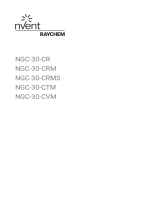 nVent RAYCHEM NGC-30-CR Controller Board User manual
nVent RAYCHEM NGC-30-CR Controller Board User manual
-
Pentair raychem ngc-30/uit2 Programming Manual
-
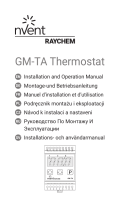 nvent GM-TA Thermostat User manual
nvent GM-TA Thermostat User manual
-
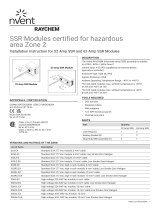 nVent RAYCHEM SS3-EX SSR Modules Certified for Hazardous Area Zone 2 Operating instructions
nVent RAYCHEM SS3-EX SSR Modules Certified for Hazardous Area Zone 2 Operating instructions
-
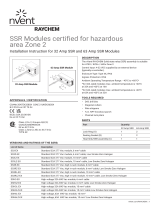 nVent RAYCHEM SS3-EX Hazardous Area Control Panel User manual
nVent RAYCHEM SS3-EX Hazardous Area Control Panel User manual
-
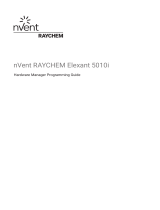 nvent NGC-20 User manual
nvent NGC-20 User manual
-
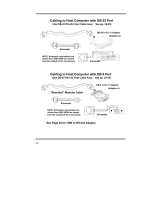 Acroprint Time Recorder RK41012 User manual
Acroprint Time Recorder RK41012 User manual
-
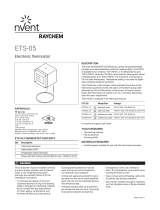 nvent ETS-05 Serial User manual
nvent ETS-05 Serial User manual
-
Acroprint RS-485/External Modem Owner's manual
-
Toshiba BMS-IFMB1280U-E Installation guide






































